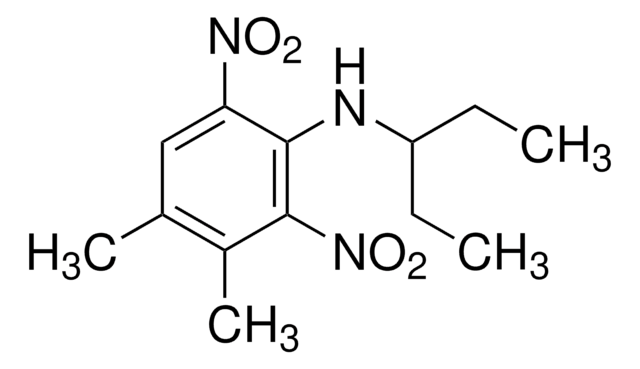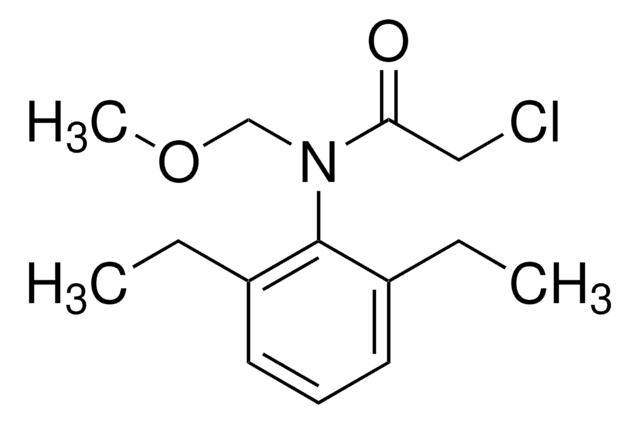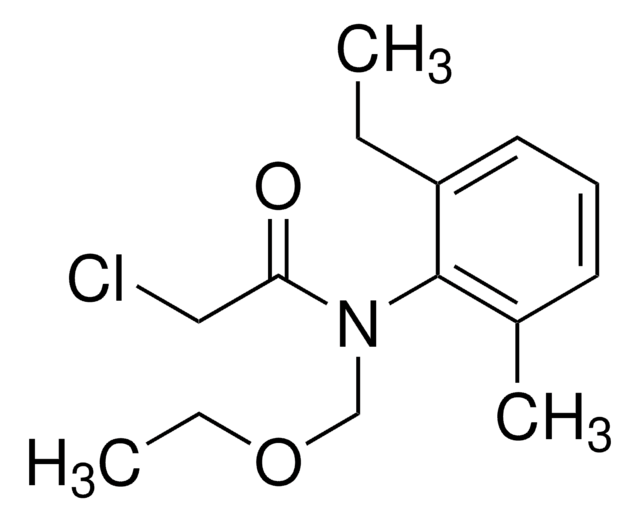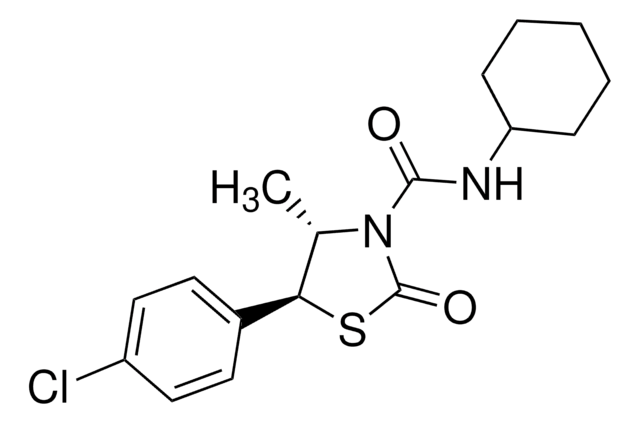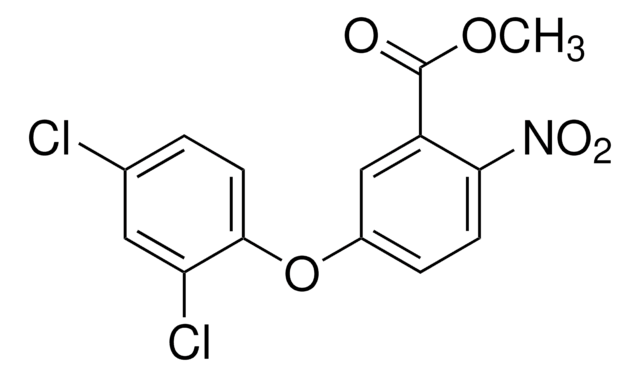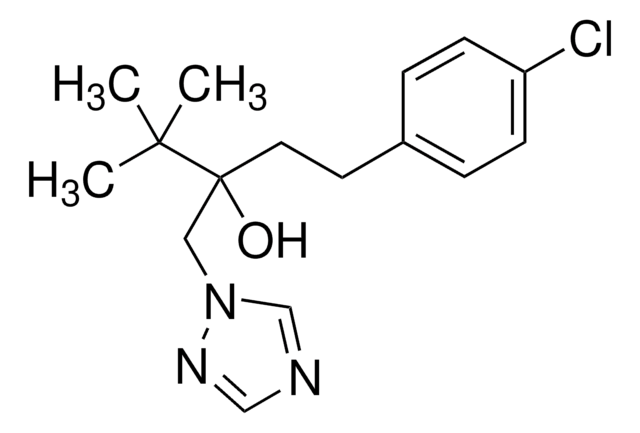36792
Aclonifen
PESTANAL®, analytical standard
Sinónimos:
2-Chloro-6-nitro-3-phenoxyaniline
About This Item
Productos recomendados
grade
analytical standard
product line
PESTANAL®
shelf life
limited shelf life, expiry date on the label
application(s)
agriculture
environmental
format
neat
SMILES string
Nc1c(Cl)c(Oc2ccccc2)ccc1[N+]([O-])=O
InChI
1S/C12H9ClN2O3/c13-11-10(18-8-4-2-1-3-5-8)7-6-9(12(11)14)15(16)17/h1-7H,14H2
InChI key
DDBMQDADIHOWIC-UHFFFAOYSA-N
¿Está buscando productos similares? Visita Guía de comparación de productos
General description
Legal Information
signalword
Warning
hcodes
Hazard Classifications
Aquatic Acute 1 - Aquatic Chronic 1 - Carc. 2 - Skin Sens. 1A
Storage Class
11 - Combustible Solids
wgk_germany
WGK 2
flash_point_f
Not applicable
flash_point_c
Not applicable
ppe
Eyeshields, Gloves
Certificados de análisis (COA)
Busque Certificados de análisis (COA) introduciendo el número de lote del producto. Los números de lote se encuentran en la etiqueta del producto después de las palabras «Lot» o «Batch»
¿Ya tiene este producto?
Encuentre la documentación para los productos que ha comprado recientemente en la Biblioteca de documentos.
Nuestro equipo de científicos tiene experiencia en todas las áreas de investigación: Ciencias de la vida, Ciencia de los materiales, Síntesis química, Cromatografía, Analítica y muchas otras.
Póngase en contacto con el Servicio técnico